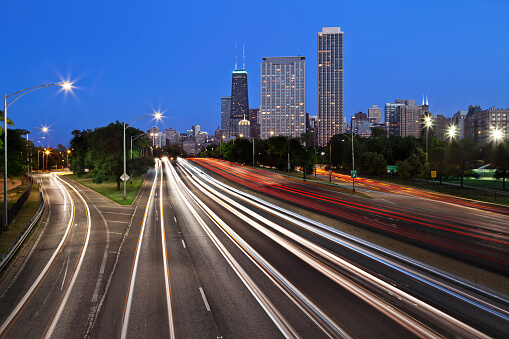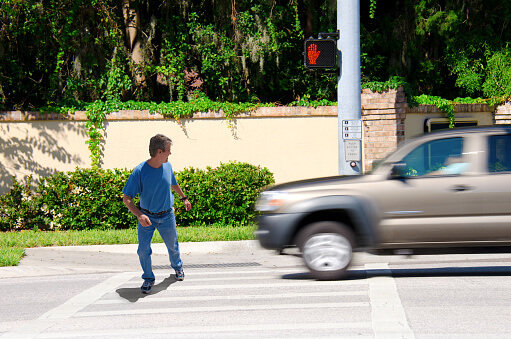Being a pedestrian in Chicago can be a dangerous ordeal. Twenty-one people died during the first five months of the year – a 31 percent increase over the 2012-2016 average for the same time span, according to the Chicago Tribune.
The jump in pedestrian fatalities mirrors what’s happening nationwide. There are more cars on the road – and more distracted drivers behind the wheel.
This grim statistic comes to light at a time when Chicago is seeking ways to boost safety for people who use the roads. A recent column in the Tribune examines the progress of the one-year-old Vision Zero traffic safety program. The Tribune concludes that the results are difficult to judge.
Vision Zero, an international road safety project adopted by 30 cities in the United States, including Chicago, has the goal of eliminating traffic deaths and serious injuries by 2026. The project also wants to see the number of traffic deaths drop by 20 percent by 2020.
While pedestrian deaths spiked in 2018, the city has made efforts to boost road safety. They include lowering the speed limit on part of Milwaukee Avenue. The city also has built “refuge islands” which allow pedestrians to wait safely while crossing a busy street. Drivers see the pedestrians and then stop to allow them to pass. In total, Chicago has completed 90 different projects aimed at keeping pedestrians safe, according to the Tribune.
Speeding linked to pedestrian fatalities
One of the biggest problems linked to pedestrian deaths and injuries is speed. New York City has seen reductions in pedestrian deaths after reducing speed limits to 25 mph. Chicago’s speed limit is 30 mph.
A fast-moving vehicle needs more distance to stop than a slow-moving vehicle. For example, a car traveling at 40 mph will need 118 feet to stop, according to the Tribune, which cited the United Kingdom Department for Transport. The same vehicle moving at 20 mph can stop in 40 feet.
Other safety improvements include redesigning streets to make them safer for pedestrians and people riding bicycles. For example, curb extensions, or “bump outs,” reduce the crossing distance and allow drivers and pedestrians to better see each other.
Such measures have saved lives in other cities. New York’s infrastructure changes, along with beefed up enforcement of traffic laws, have reversed bad trends. The Tribune reports that New York experienced a 23 percent drop in road traffic deaths and a 45 percent decline in pedestrian deaths since 2013.
While it can be difficult to enforce laws and adopting a reduction in speed limits can be politically tricky, it’s important for city officials to continue to push for safety changes. Over the past several years, the number of pedestrian deaths in Chicago has been rising, an alarming and unacceptable trend that needs to be reversed.
If you were seriously injured or lost a loved one in a traffic accident in Chicago, you understand how difficult life can become through no fault of your own. A serious pedestrian accident can lead to physical, emotional, and financial hardship.
The experienced attorneys at Coplan + Crane have fought hard on behalf of victims and families who lost loved ones in accidents. If you need help obtaining compensation after an accident, contact our law firm for a free consultation.
















